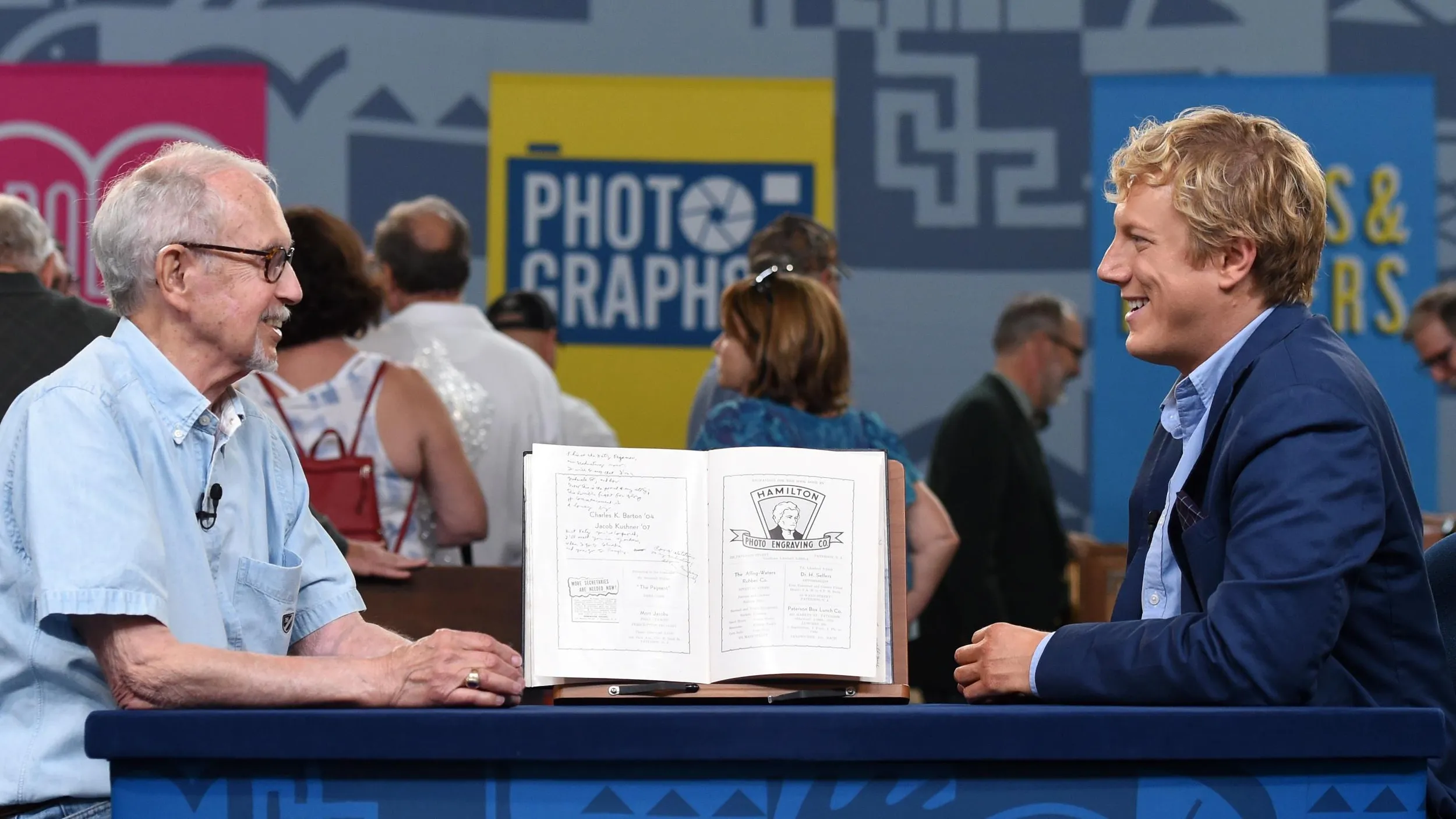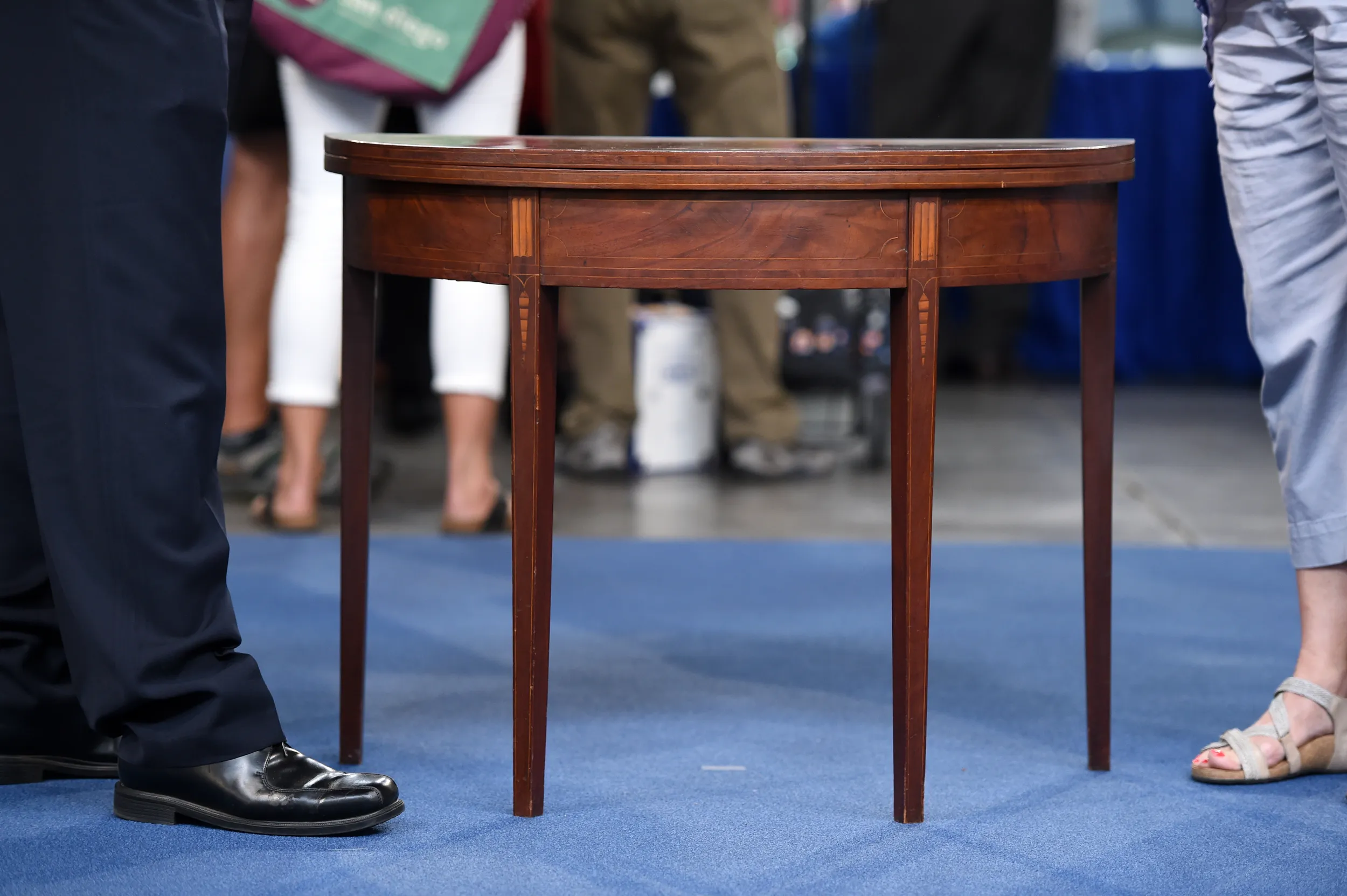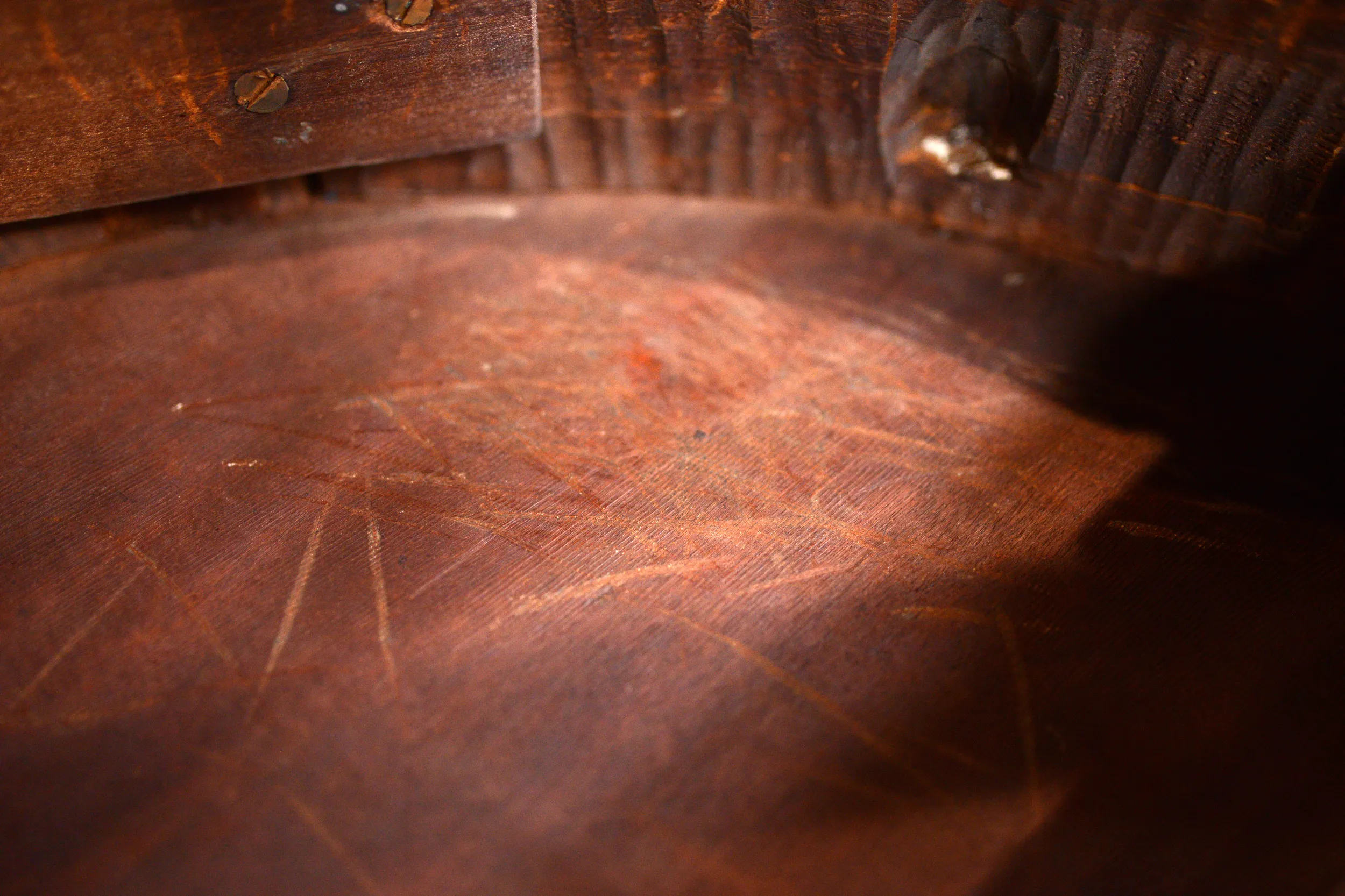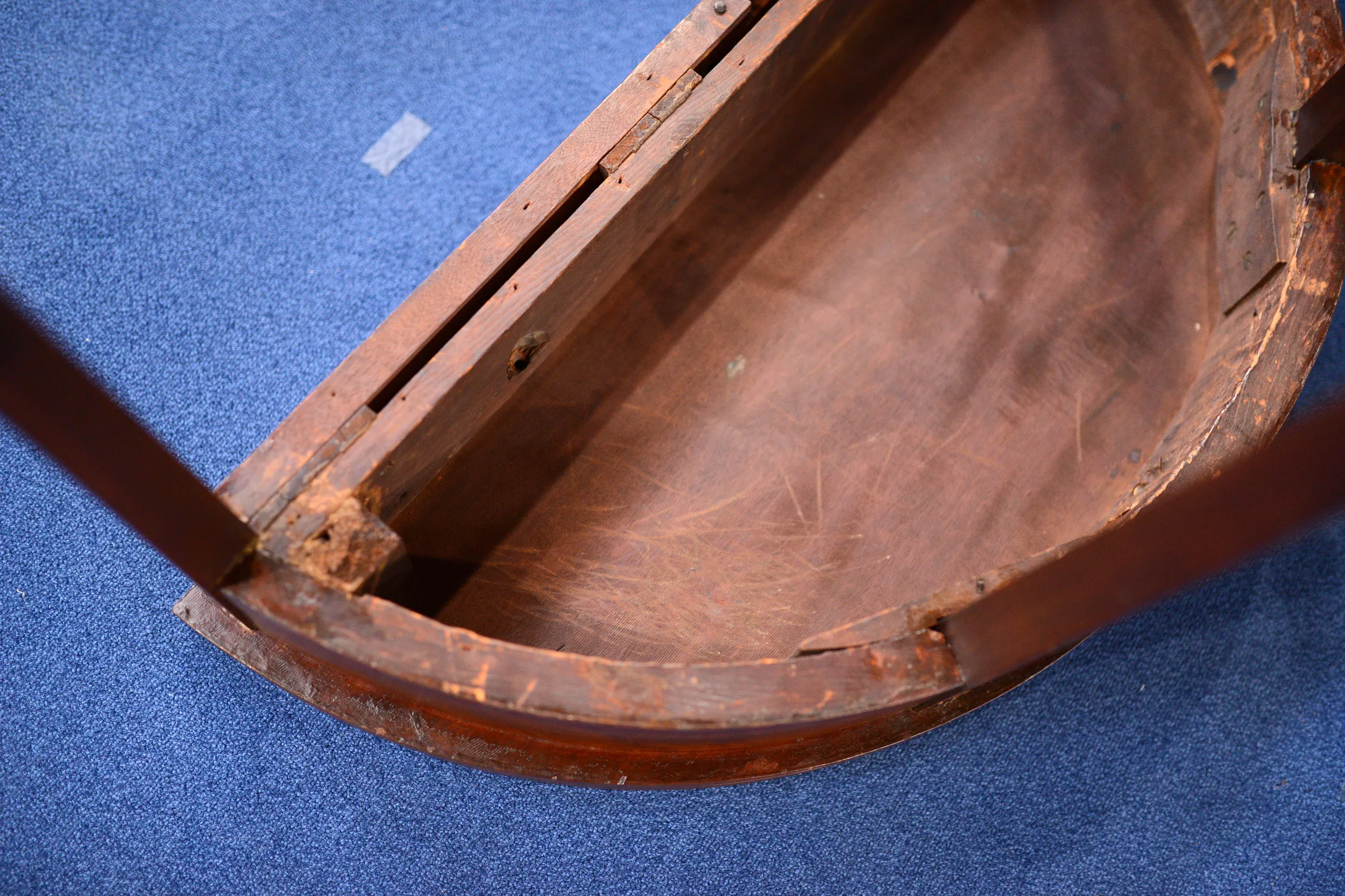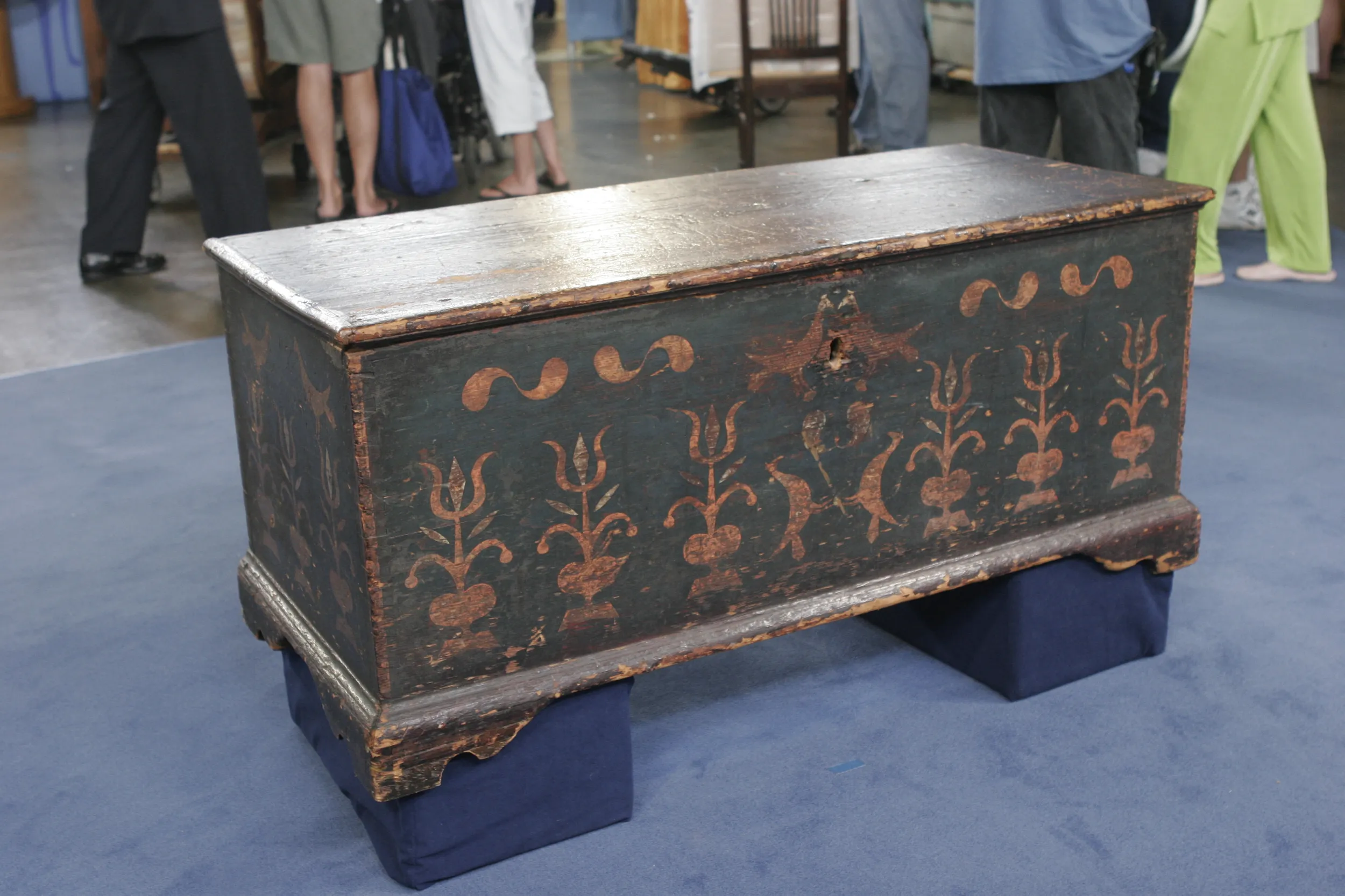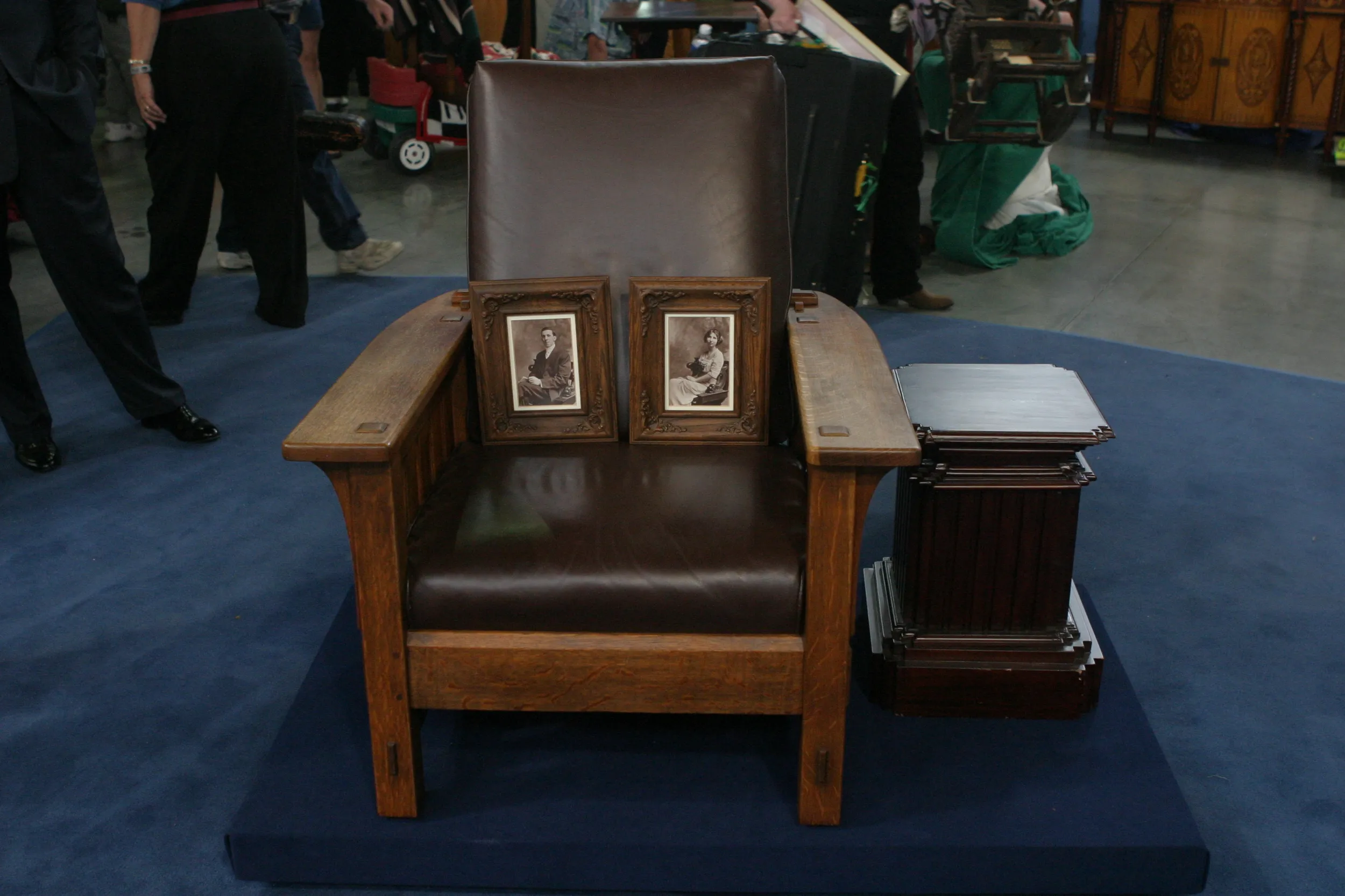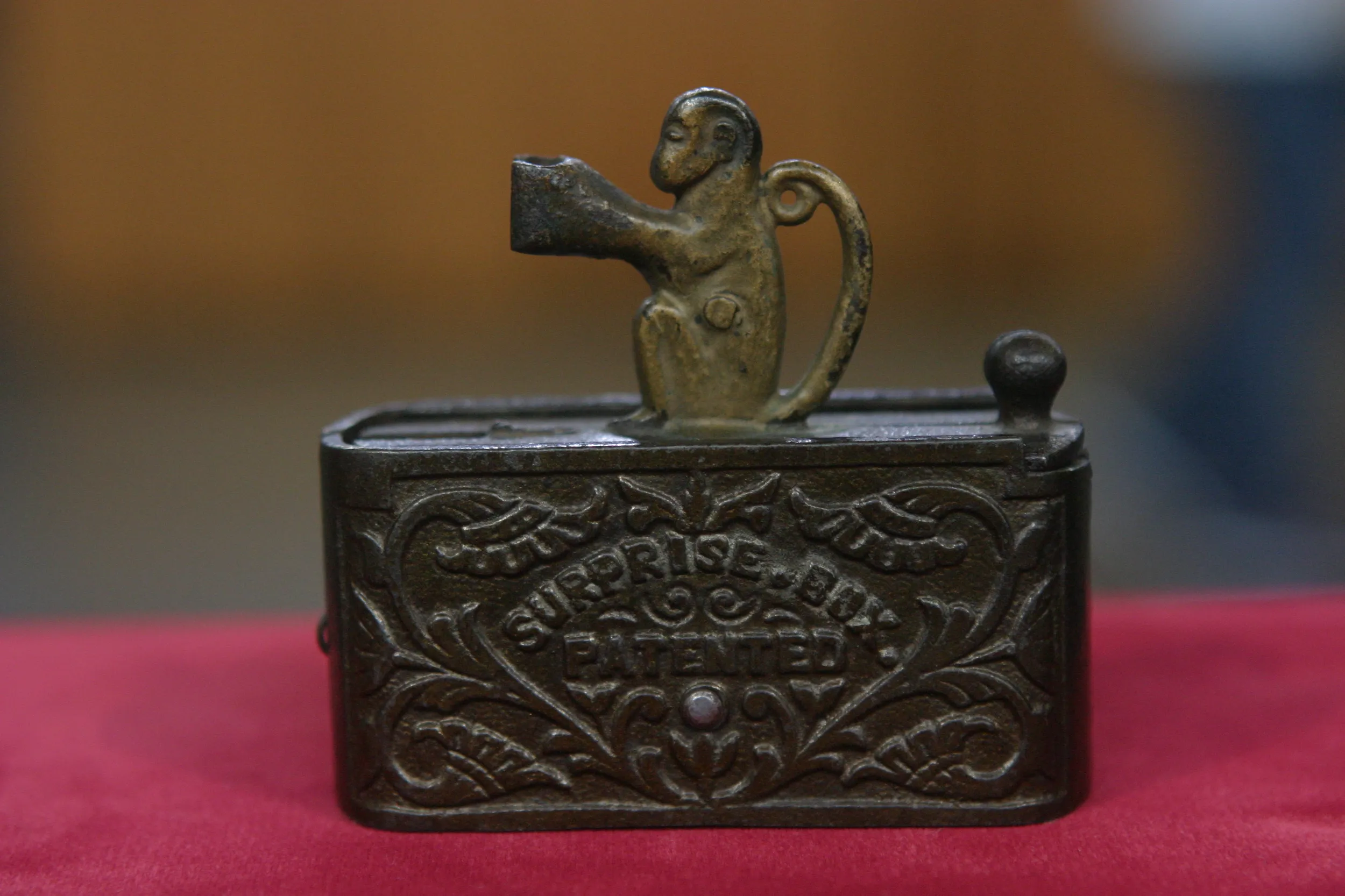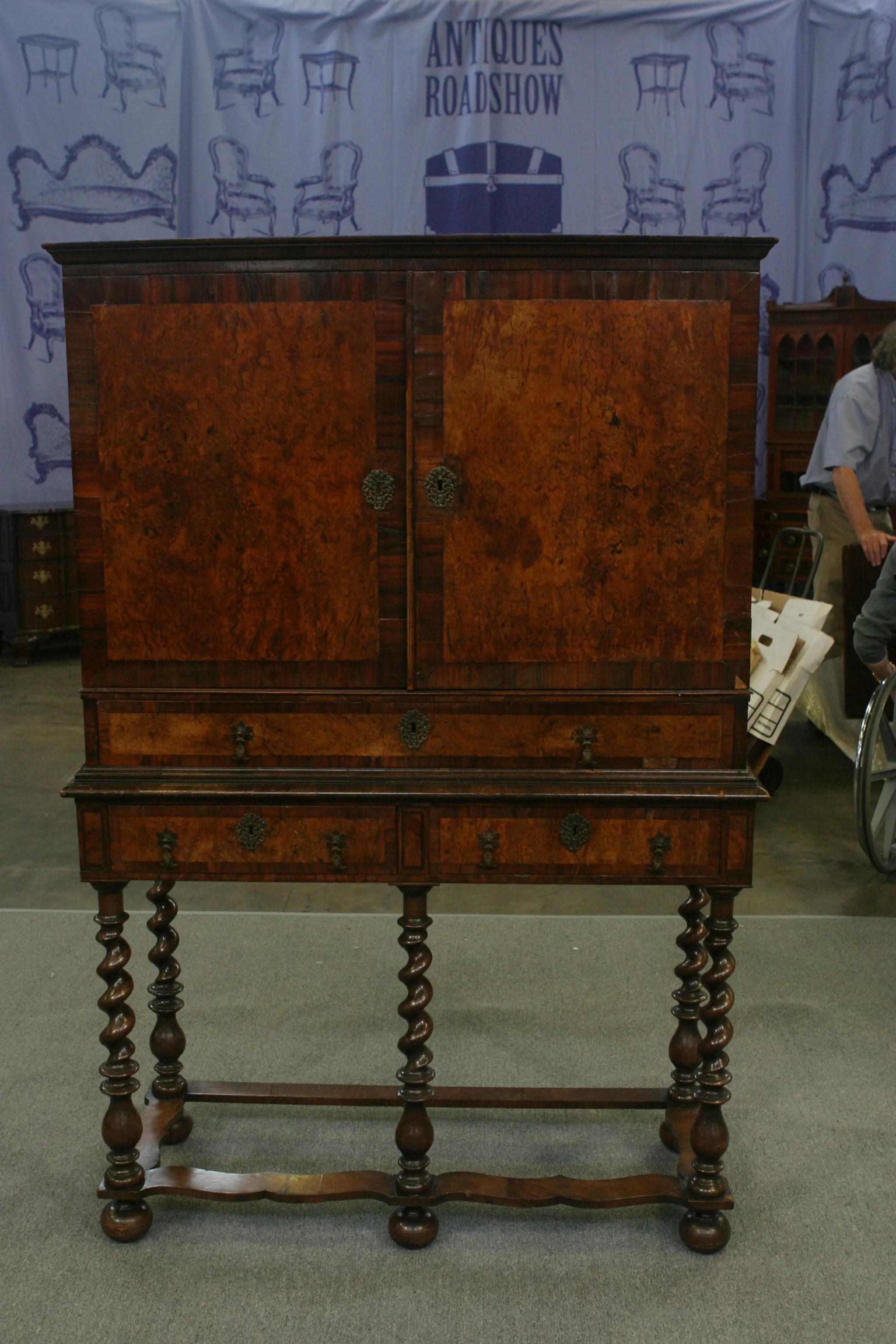GUEST: I brought in a table that was purchased someplace in Europe, I believe, in the early 1900s, probably 1912, when my great-grandfather took his daughter on a grand European tour, and they were to go on into India and Asia. She bailed in Egypt, decided she wanted to head home to her family and her boyfriend, who is now my grandfather, and he continued on to Asia and came home to San Francisco. So he picked this table up. I know there was a table like it in an Antiques Roadshow book that was valued at a very high value, but I don't know if this is the same kind of thing or not.
APPRAISER: It's actually called a card table or a games table, made about 1800 in the Hepplewhite style. In the 18th and early 19th century, it was very popular for people to get together and play card games on tables like this. When it wasn't in use, it would sit like this against the wall…
GUEST: Right.
APPRAISER: …perhaps with the leaf up…
GUEST: Right.
APPRAISER: …and when they wanted to use it as a card table, they would bring it out into the center of the room, pull out the leg, flip it down, you've got a card table.
GUEST: There you go!
APPRAISER: The top is solid mahogany, the apron is mahogany veneer, the secondary woods inside are birch and pine. The inlay in the front of the table here, right here, these are individual pieces of wood that are inlaid into the solid leg, and the way they get this three-dimensional aspect is each individual piece, it's probably holly or maple or something like that, after it's cut out, is dipped into hot sand just to the point where it begins to scorch, and it gives it that three-dimensional aspect. This particular combination of bookend inlay and icicle inlay is associated with Rhode Island furniture, in particular with Newport furniture, and I believe this piece was made in Newport-- if not Newport, then Providence. So I can't say positively that this is a Newport table, but it's of that school, and that's very desirable to collectors. In addition to the inlay, the shape of the table, this demilune shape, and the cross-banding, the type of inlay, it's all indicative of Rhode Island furniture. I would put a retail value of $15,000 to $17,000 on the table. It's a superb example of a Rhode Island card table.

